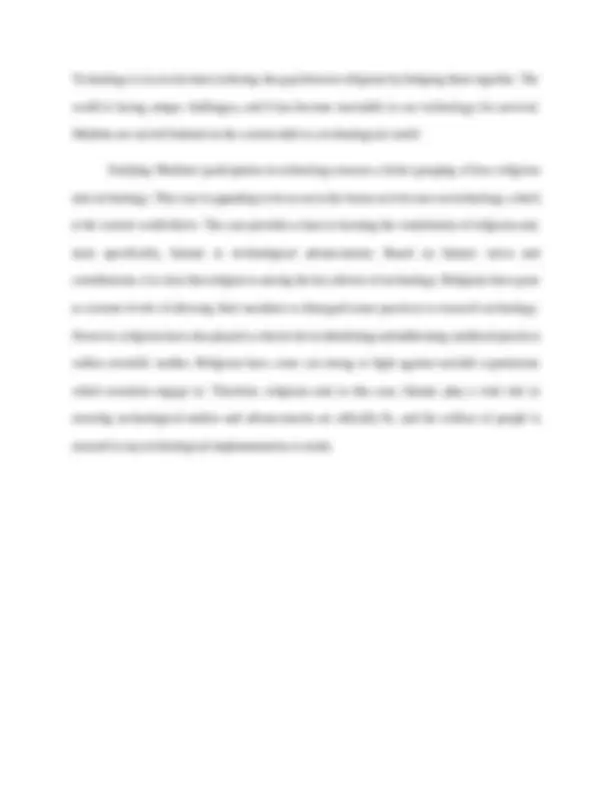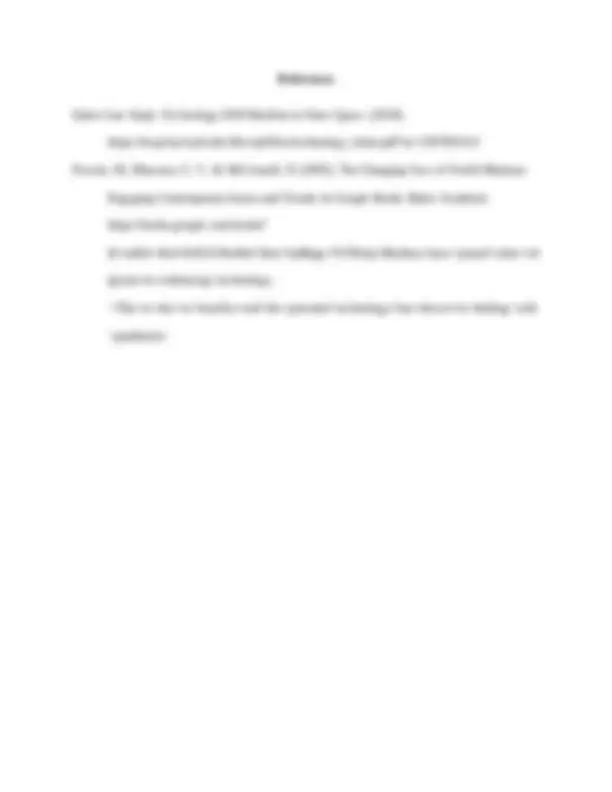




Study with the several resources on Docsity

Earn points by helping other students or get them with a premium plan


Prepare for your exams
Study with the several resources on Docsity

Earn points to download
Earn points by helping other students or get them with a premium plan
Community
Ask the community for help and clear up your study doubts
Discover the best universities in your country according to Docsity users
Free resources
Download our free guides on studying techniques, anxiety management strategies, and thesis advice from Docsity tutors
Muslim involvement in technology shows how religion can promote innovation while ensuring ethical practices. Islam encourages acquiring knowledge and advancing science, but it also stresses moral responsibility. This balance ensures that technological progress aligns with human welfare, demonstrating that religion and technology can coexist and positively affect each other.
Typology: Summaries
1 / 4

This page cannot be seen from the preview
Don't miss anything!



Islamic and Technology(Islamic Case Study: Technology) Student’s name Institution Course code Professor Date
Muslims' beliefs sometimes cause challenges in their attempt to accept new technologies. From the case study on technology, Muslims have faced a challenge contributing and participating in space study. The case shows that at most, 2% of astronauts are Muslims. Muslims find it difficult due to some religious practices and recruitment practices practiced by the US. Although as countries develop their space programs, Muslims have joined the field, they often experience confusion in praying times, observing Ramadan, and prostrating when playing. The case gives Sultan bin Salman bin Abdulaziz Al-Saud who was the first Muslim to space. Salman narrated the challenges he experienced to perform prostration. Later, Muslims shared similar experiences, which made it evident that their religious practices were highly impacted in space. From these challenges, guidelines on space study and travel have lifted rules, and Muslims, or any other religion, can ignore some religious practices when in space. Muslims, despite them facing challenges, encourage space travel. This makes it clear that Muslims embrace technology despite temptations in their religious practices. However, despite allowing members to participate in the studies, the Islamic religion has maintained that scientists should not engage in suicide missions. For example, the one-way visit to Mars was considered suicide among Muslims and contrary to the religion’s teachings on suicide. However, with current advancements in technology, Muslims are forced to adjust their practices to fit society well. As a result, the religion has been forced to drop some practices, including certain dress codes. Muslims have joined other religions in embracing technology. This is due to the benefits and the potential technology in dealing with pandemics, diseases, and catastrophic threats. Technology is leading in healthcare provision, security surveillance, food technology, and business (Pocock et al., 2005). To ensure their followers are safe, the Islamic religion has embraced technology and collaboration with governments and other religions to ensure safety globally.
References Islam Case Study -Technology 2018 Muslims in Outer Space. (2018). https://hwpi.harvard.edu/files/rpl/files/technology_islam.pdf?m= Pocock, M., Rheenen, G. V., & McConnell, D. (2005). The Changing Face of World Missions: Engaging Contemporary Issues and Trends. In Google Books. Baker Academic. https://books.google.com/books? hl=en&lr=&id=hSlUS36w6dcC&oi=fnd&pg=PA7&dq=Muslims+have+joined+other+rel igions+in+embracing+technology. +This+is+due+to+benefits+and+the+potential+technology+has+shown+in+dealing+with +pandemics